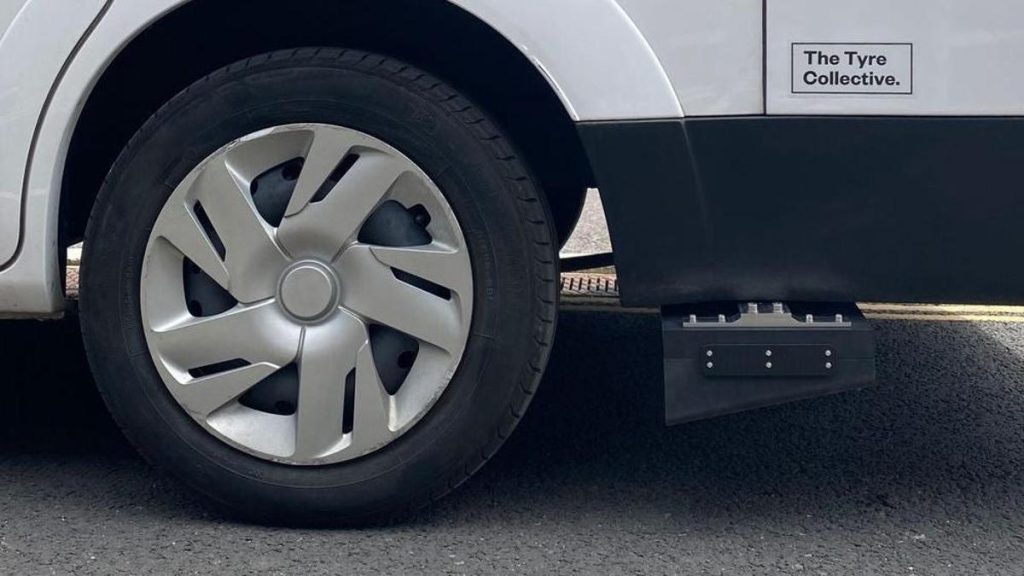Tire Pollution Will Get Worse As Heavy EVs Hit the Road

The Tyre Collective prototype is being tested on delivery vans in London.Photo: The Tyre Collective
Electric cars may have zero tailpipe emissions but they still emit noxious waste through their tires. Really, all cars shed pieces of spent rubber when they drive along roads, as rubber and other toxic compounds in tires are ground away.
Since EVs are heavier and they accelerate faster than ICE-powered cars, they chew up tires faster and shed more of these dirty particles, or tire emissions. But a London startup called the Tyre Collective is trying to clean up after rubber-burning EVs — and ICE-powered cars, too — with a device called the “box” that bolts on after the wheel. It’s basically a catch-can for tire emissions.
Tailpipes have catalytic converters that collect waste, and now tires have this new (unnamed) device, according to Bloomberg. The box catches tire particles using electrostatic plates. As the car tire rolls, the jettisoned particles are “charged from friction on the road,” and the Tyre Collective box draws them in.
Photo: The Tyre Collective
The device can pull up to 60 percent of tire emissions in the lab, but only about 20 percent in real-world conditions. The startup is currently testing prototypes on a couple of delivery vans in London to increase the rate of particle collection.
G/O Media may get a commission
And now that EVs are hitting the market, the Tyre Collective thinks it’s the best time to perfect their design. Due to their bigger size, higher weight and greater torque, EVs produce 20 percent more tire emissions than comparable ICE-powered cars. A gas-burning car sheds 73 milligrams per kilometer from all four tires; a comparable EV sheds en estimated 88 milligrams per kilometer. Damn you, metric system!
Photo: The Tyre Collective
In any case, we’re talking trace amounts of particles per mile, but when you consider how many vehicles are on the road, and the distance each one will travel, tire emissions add up. Research suggests that tires are the second-leading source of microplastics in the ocean. And because scientists are barely beginning to study and catalog tire emissions, we don’t fully know how harmful these pollutants are.
You can read about the dangers of petrochemicals in tires at Bloomberg, but one study cited in the report found a new byproduct of tire emissions called 6PPD-quinone that was killing salmon en masse in Washington state.
When exposed to sun and air, 6PPD transforms into a chemical called 6PPD-quinone, which turns out to be highly toxic to coho salmon — causing them to circle, gasp at the surface and then die within hours.
Agencies in the U.S. are trying to add tires containing the chemical preservative 6PPD to their list of hazardous products, to prompt tire makers to find safe substitutes. But the study of tire emissions is relatively young. The whole issue has been overshadowed — understandably — by tailpipe emissions and CO2 pollution.
The Tyre Collective plans to put its particle collection device on commercial and municipal fleets. The startup hopes it can convince EV makers to outfit new cars with similar devices at the factory. The devices would be then be emptied at service intervals and the particles could be used to make new tires or other rubber products. That’s a hell of a lot better than it ending up in the ocean.
Image: The Tyre Collective





